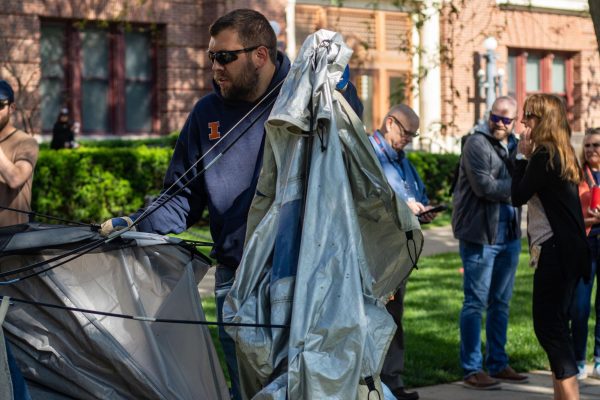Offensive production starts with front line
September 15, 2006
The offensive line could be the most underrated part of any football team. Most of the time, the offense’s success hinges on who wins the battle up front. Think about it. A team could have a decent offense with a quality quarterback and a solid running attack, but nothing can be accomplished in football without good blocking.
That’s why if Illinois’ offensive line returns to form Saturday, the Illini will beat Syracuse. Against Eastern, Illinois’ front opened holes for the running backs and gave quarterback Tim Brasic more than enough time in the pocket.
Against the Scarlet Knights, however, it was a different story. The O-line was manhandled up front during the Rutgers game. Offensive production dropped more than 75% from the first game to the second and the defensive line for Rutgers collected five sacks – a sad thought considering how mobile both quarterbacks are. Brasic and Isiah Williams were pressed for time and those holes for the running backs were nonexistent.
Sure, it was quite a jump in talent from a Division I-AA school to a 2005 bowl team, but that’s unacceptable. How can a quarterback stand in the pocket worrying that he might be decapitated? A weak offensive line that crumples like a paper bag when under pressure has to be a signal caller’s worst nightmare.
Last Saturday’s performance didn’t seem to change head coach Ron Zook’s mind, though. The offensive line is still the “most improved” part of this Illinois team according to Zook. The addition of transfer Akim Millington from Oklahoma increased the offensive line to over 1,500 pounds. Each starter weighs in at over 300 pounds and the five starters average 308 pounds. It seems like that kind of weight would not be easy to maneuver around, but Rutgers made them look far from “most improved.”
Get The Daily Illini in your inbox!
The 2005 St. Louis Rams are a great example of where mediocre blocking can hurt a team. They were loaded with four Pro Bowlers on the offensive side of the ball. Quarterback Marc Bulger was coming off an impressive second year, wide receivers Tory Holt and Isaac Bruce gave him someone to throw to and opened up the field for Marshall Faulk, one of the best runners of our generation.
What happened? Well, the Rams went 8-8 and missed the playoffs because the blocking up front was inadequate, at best. Bulger was sacked 26 times in just eight games and the Rams averaged a meager 4.0 yards per carry.
By no means do the Illini need the best group of guys in NCAA history, though. They just need a group that can prevent the defense from sacking two very mobile quarterbacks and open a couple holes during the course of the game.
The running back situation
Sophomore Rashard Mendenhall needs to get more carries. If Zook is really looking to the future, why is he holding back the most talented runner on the team? Mendenhall is two years younger than Pierre Thomas and E.B. Halsey, the other backs he is sharing time with, and is out-producing both of them.
He has the highest yards per carry but the least amount of chances; has the most talent and potential, and was by far the most effective against Rutgers. Out of the 66 yards Illinois gained on the ground, Mendenhall accounted for 22 of them, but only got two attempts. So why isn’t this kid getting more opportunities to play?






